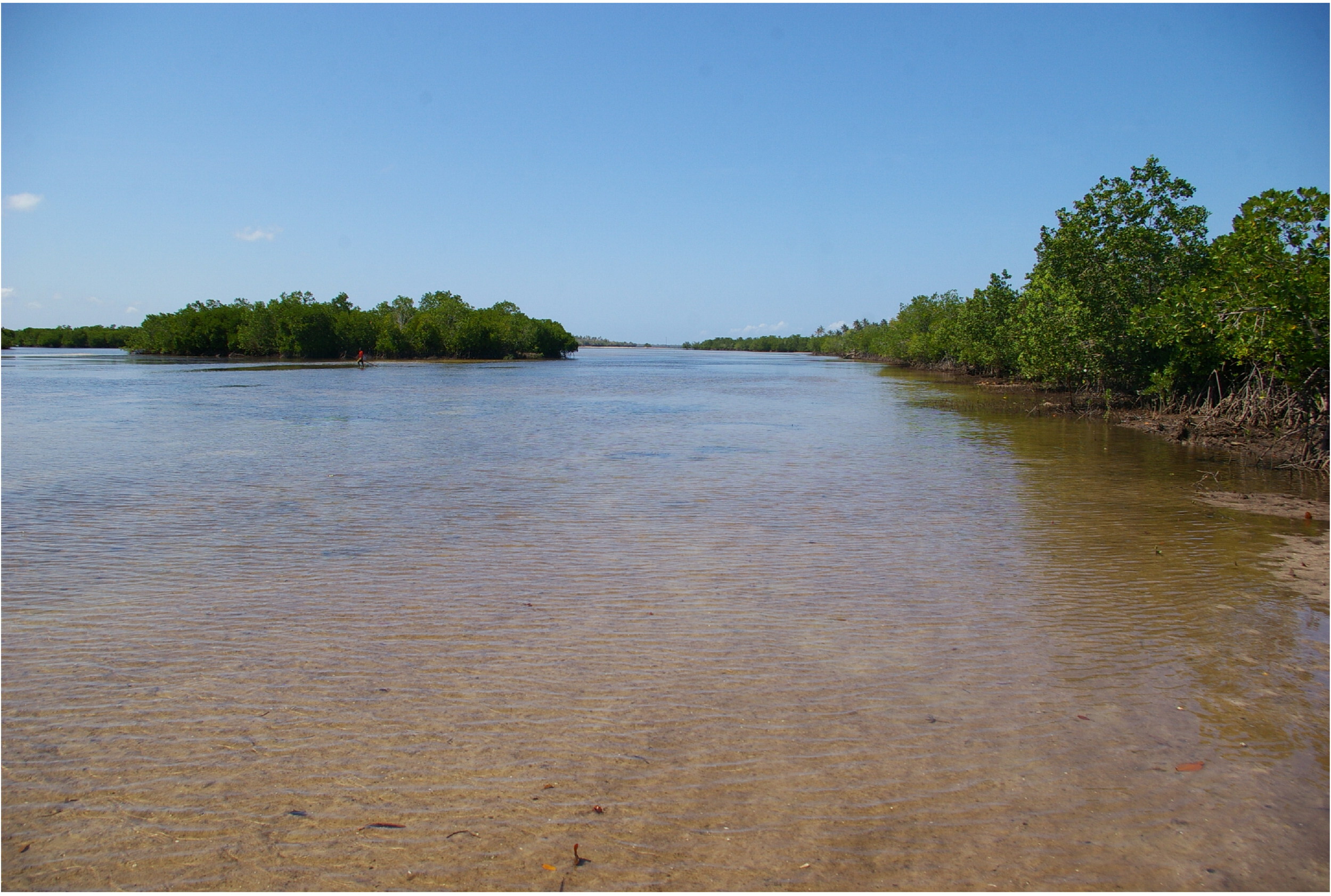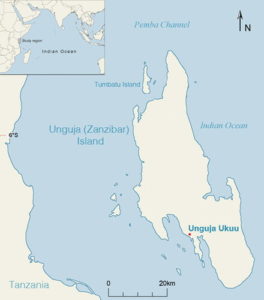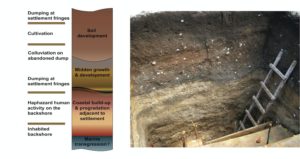
Humanity’s impact on the environment is often framed in the context of the post-industrial era but new archaeological research reveals how intensive land use by a medieval East African population altered the natural habitat forever.
Unguja Ukuu, an archaeological settlement located on the Zanzibar Archipelago in Tanzania, was a key port of trade in the Indian Ocean by the first millennium when the island was populated by farming societies establishing trade links toward the Indian Ocean, China and beyond.
New research published in the Journal of Island and Coastal Archaeology describes how human activities modified the shoreline at Unguja Ukuu.
Urban growth at the coastal settlements and trade ports on the island, and associated trade activities, may have silted up the lagoon hindering the sea traffic and ultimately impacted fish numbers and playing a part in the community’s decline.

For millennia, the Indian Ocean was the maritime setting for a budding form of globalisation, with extensive trade and exchange networks operating between Eastern Africa, Southern Arabia, and Southeast Asia which foreshadowed modern global shipping networks.
“The islands of the Zanzibar Archipelago witnessed numerous environmental and cultural changes as the region became a hub of maritime trade, cross-cultural interaction, and global exchange,” says the study’s lead author and Senior Lecturer in Archaeology at Flinders University, Dr Ania Kotarba-Morley.
These changes resulted in the dumping of food remains, general waste and increased agricultural activity and land use, all of which negatively impacted sediment build-up along the island.
“Whilst discussion about human impacts on the planet and its natural environments is ever present in our current discourse, they almost always refer to the modern impacts and are focused on agricultural or urban areas such as large cities.
“Our study outlines clearly how human interference in a natural environment impacted coastal landforms and sediments on a remote East African island already over 1000 years ago and directly changed the fortunes of the coastal inhabitants in the area as a result,” says a senior author of the study Associate Professor Mike Morley of Flinders University

The archaeologists applied a variety of standard and cutting-edge techniques to find new patterns which improve our understanding about the changes in the makeup of the sediment along the coastline of local creeks and the bay on the island, directly impacted by human activity.
“To help understand how and why these ancient ports thrived or declined, it is important to know how the coastal landscape influenced the way traders undertook their commercial activities, or drove decisions, including mooring locations and investments of labour and capital by local communities and any central authorities,” says Dr Kotarba-Morley.
“From an environmental standpoint, it is crucial to know whether this commercialisation had a physical effect on the coastline, anthropogenically modifying the landscape morphology or causing change,” she says.
The researchers say these processes might be implicated in the decline, and eventual abandonment of Unguja Ukuu at the turn of the second millennium AD—a period of regional socio-political and economic transformation of coastal African societies that marked the emergence of maritime Swahili culture.

